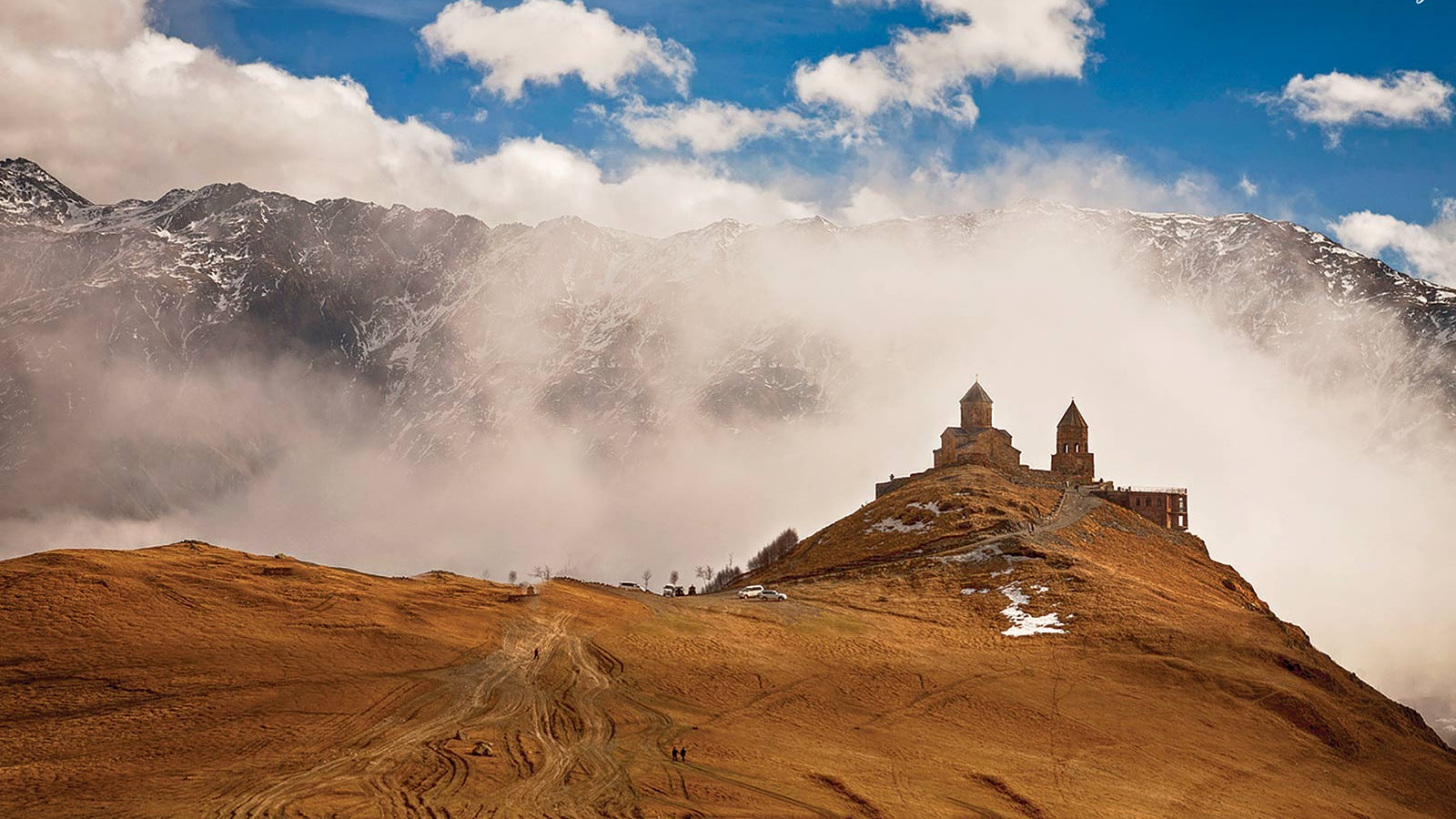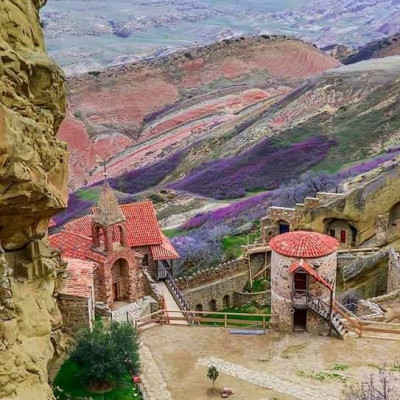
High in the Caucasus Mountains of Georgia, at 2170 meters above sea level, stands the Gergeti Trinity Church, known in Georgian as Tsminda Sameba. Built in the 14th century, this stone sanctuary is not only a place of worship but also a timeless symbol that connects the mountains and the sky. Overlooking the town of Stepantsminda and backed by the mighty Mount Kazbek, the church embodies faith, endurance, and the deep cultural spirit of Georgia. Its location, isolated yet majestic, gives visitors the feeling of being suspended between heaven and earth. The Gergeti Trinity Church was constructed in the traditional Georgian cross-cupola style, admired for its simplicity and harmony. Throughout history, it served as a refuge and a safe place to protect relics during invasions, becoming both a spiritual and cultural symbol. Despite centuries of hardship, it continues to stand resilient, a proud witness to Georgia’s Christian heritage. To reach the church, travelers journey along the Georgian Military Highway to Stepantsminda, and from there either hike for about an hour and a half or take a 4x4 vehicle up the steep road. The climb offers breathtaking views of alpine meadows, valleys, and the snow-capped Kazbek, while the destination rewards with a panorama that leaves visitors speechless. Inside, the church is modest, its atmosphere filled with humility and devotion, reminding visitors that its true beauty lies not in decorations but in its sacred aura and setting. For Georgians, Gergeti Trinity is more than a landmark; it is a symbol of identity and resilience. Georgia adopted Christianity in the 4th century, and churches like Gergeti remain powerful reminders of that legacy. The silhouette of the church standing alone against the dramatic mountains is a source of national pride, reflecting both faith and strength. The presence of Mount Kazbek adds another layer of meaning. According to local legend, it was here that Prometheus was chained for giving fire to humanity. This fusion of myth and faith enriches the experience, making Gergeti a place where history, spirituality, and nature intertwine. Today, Gergeti Trinity is one of Georgia’s most photographed and visited sites, yet it retains its silence and spiritual energy, especially at sunrise or sunset when the light transforms the mountains and sky. For travelers, it is not only a destination but an experience of connection: to the land, to the past, and to something greater than themselves. Ultimately, Gergeti Trinity is more than stone walls on a hill; it is a bridge between earth and heaven, a reminder that beauty, faith, and resilience can endure across centuries, inspiring all who come to stand before it.






 Deutsch
Deutsch
 русский
русский
